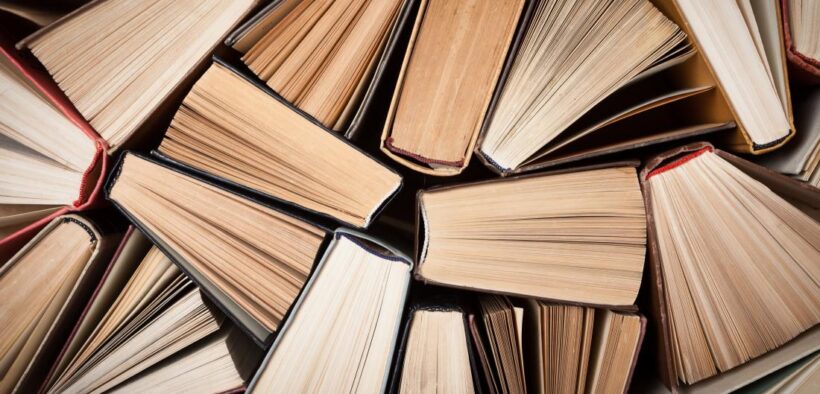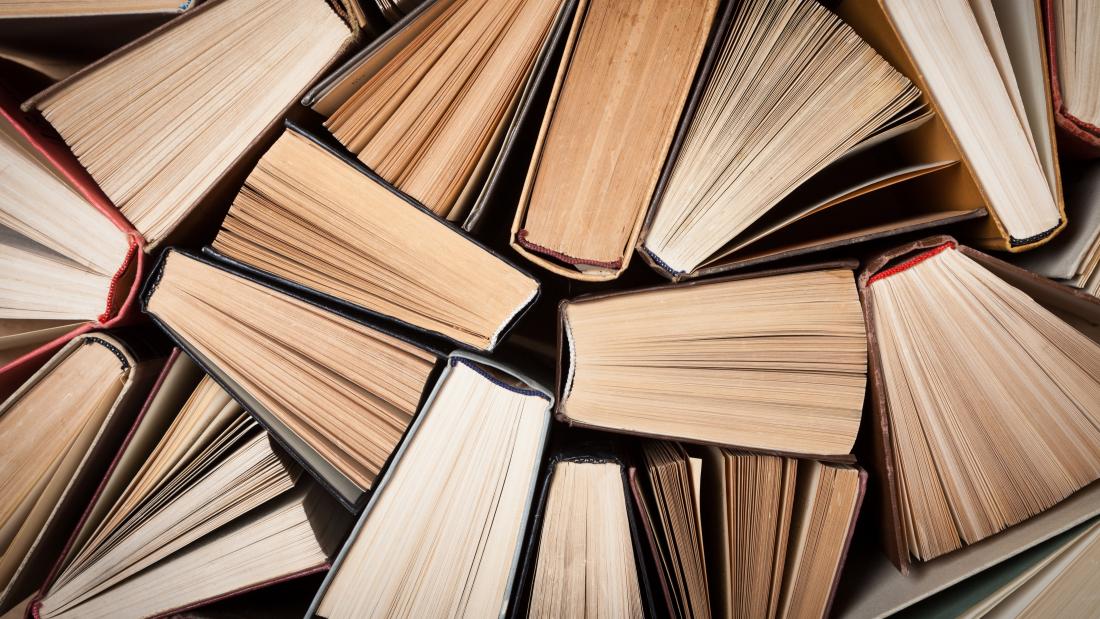The Different Types of Literature That Have Stood the Test of Time
Share

There are many kinds of bureaucracy, Jack Blog genres, and methods to categorize literature. Here, we listed the two primary sorts of literature in conjunction with their sub-categories.
TAGGED UNDER: Literature
“Great literature is genuinely language charged with which means to the maximum possible diploma.” ― Ezra Pound. Every language has its own literature. A majority of the world’s national literature may be widely categorized into English, Greek, Latin, Roman, African, Indian, American, French, Irish, Spanish, Chinese, Italian, Japanese, Persian, Sanskrit, Nepali, Russian, African-American, Canadian literature, and so forth. Literature is a shape of language that deeply impacts the minds of human beings of every age. Moreover, literature is also studied as a scientific language for various elements like grammar, usage, lexis, semantics, pragmatics, etc.

Literature is the replication of society. Thus, an e-book written at a specific time defines people, their minds, and the influences of that technology. The works of Michelangelo and Leonardo da Vinci depict the era of the Italian Renaissance, while Greek literature primarily contains the accounts of Greek Gods and Goddesses. Romanticism is set nature and simplicity, even as classicism defines complexity. A traditional example is William Wordsworth, who romanticized Romantic technology with his naturalistic writing.
READ MORE :
- Understanding the Basic Importance of Education to Youths
- We Reveal to You: The Secret to Public Radio’s Success
- Careers inside the Creative And In-call for the Field of Multimedia Design
- The Dangers of Technology Addiction are Scarier Than You Think
- Different Types of Websites
As time has modified, so have people, their paintings, and literature. Today, we are within the submit-modernism generation, in which literary works encompass a mix of language’s important and artificial tones. Most of the skeptical elements are ambiguity, satire, parody, etc. Are the maximum prominent functions determined inside contemporary technology? These days, some authors use long composition strategies to interlink and gift more than one tale.
Forms of Literature
Written
~ Fiction – Drama, novel, poetry, short story, and frame narrative.
~ Non-Fiction – Autobiography, biography, essay, journal, diary, tour literature, literary grievance, media, and outside literature.
Oral
Oral literature, epic and ridicule epic, proverbs, oral poetry, and folklore.
Types of Literature
Oral and written literature are the two predominant types of literature. As we all recognize, almost all kinds of literature are to be had in written shape. Much oral literature has been made to be had within the shape of books. We will now check out fiction and non-fiction literature as the most important sorts of literature and also keep in mind the numerous forms of oral literature.
While prose and Verse are the two varieties of writing, every piece with a sentence or paragraph is prose, whereas Verse is the poetic form of writing; examples of prose are drama, novels, newspapers, short tales, biographies, essays, journals, philosophy, journey literature, children’s literature, myth and medical writings, ancient writing, diaries, and many others. An example of Verse is poetry.
Thus, we can conclude that fictional and non-fictional literature are ordinarily prosed, besides poetry. Interestingly, if you come upon a verse form in a drama, it is termed dramatic poetry or verse drama!
Fiction Literature – Drama
Drama includes theatrical dialog accomplished on stage and consists of five acts. A drama with just one act is a ‘one-act play.’ Flash player is the shortest 10-minute play. According to Aristotle, there are six factors in a drama plot: diction, character, notion, spectacle, and track.
Tragedy
A scene from Shakespeare’s tragedy – ‘King Lear.’It revolves around the principal person, his existence, battle, misfortune, and grief, or every so often, the loss of life of the expensive ones or the main character. The monolog element is the very best way in which the misfortune of the principal man or woman is expressed, whereas prophecy uses a witch, ghost, and so forth. Are the darkish elements used to give tragedy an experience of horror?
Examples of tragedies are ‘The Illiad’ and ‘The Odyssey’ using Homer – the two famous Greek tragedies. The four popular tragedies of William Shakespeare are – Hamlet, King Lear, Macbeth, and Othello.
Comedy
A scene from Shakespeare’s comedy, ‘Much Ado About Nothing, ‘ is complete with laughter, and incidents are handled very gently. The elements utilized in comedy are romanticism, exaggeration, marvel, and a comedian’s view of a specific occasion. Farce, a comedy of manners, is one of the sub-varieties of comedy. E.G., Ben Jonson’s ‘Comedy of Humour,’ ‘The Importance of Being Earnest’ by Oscar Wilde, ‘Much Ado About Nothing’ by William Shakespeare, etc.
Comedy – Farce
The word origins from the Latin word ‘farce’ approach ‘to fill or stuff.’ Thus, ‘farce’ is a mild comedy occasion inserted in the center of a play or film to lighten the scene. It intends to make the audience snigger while the plotline appears serious. It may be through humor, nonsense, over-exaggeration, or jokes. E.G., Chaucer’s ‘The Canterbury Tales,’ Oscar Wilde’s ‘The Importance of Being Earnest,’ Robin Hawdon’s ‘Perfect Wedding,’ and many others.
Comedy – Comedy of Manners
It is a Comedy of Manners when you laugh because of the class, fashion, or manners of a stereotypical man or woman. E.G., Richard Sheridan’s ‘The School for Scandal’ (1777), Oliver Goldsmith’s ‘She Stoops to Conquer (1773), Harold Pinter’s ‘The Homecoming’ (1964), etc.
Comedy – Melodrama
Melodrama blends two nouns—’Melody’ and ‘Drama.’ Currently, the period is used for works that lack sophistication, but in the 1840s, it became used to indicate a musical play. For example,’ Uncle Tom’s Cabin’ is one of the famous plays that describes the cruelty of the labor lifestyle. It emphasizes sensationalism, and in the end, the play concludes with a ‘happy ending.’
Comedy – Tragicomedy
The play that starts evolved with the serious mode but has a satisfying finish is a tragicomedy. E.G. ‘The Visit’ by Friedrich Dürrenmatt.
Fiction Literature – Novel
The novel is a simple narrative of a tale without any dialogue, like drama. It may be comic, romantic, criminal, detective, adventurous, political fiction, etc.
Novel – Allegory
The story revolves around multiple meanings. What the writer says at once is symbolic and completely distinct from the means conveyed on the cease. Political and historical allegory are two types of allegory. For example, Girish Karnad’s ‘Tughlak’ is political, while John Bunyan’s ‘Pilgrim’s Progress’ is historical.
Novel – Epistolary
Epistolary novels are collections of letters and emails. Samuel Richardson’s Pamela and Henry Fielding’s Joseph Andrew are amazing examples of epistolary novels.
Novel – Feminist
Feminist novels are written by using ladies around the arena to address women’s problems in a male-ruled society. Simone de Beauvoir (‘She Came to Stay, ‘The Mandarins,’ and ‘The Second Sex’), Betty Friedan (‘The Feminine Mystique’), and Virginia Woolf (‘A Room of One’s Own’) are a few popular feminist novelists. You’ll be surprised to recognize that some lady writers used male names as their pen names to hide their identity due to the fact male authors’ works had been alleged to be taken significantly with no bias.
Novel – Gothic
Gothic fiction combines horror and romance. Melodrama and parody are also factors in Gothic plays. For example, Horace Walpole’s ‘The Castle of Otranto’ (1764) is revered as the first Gothic play in literature.
Novel – Ironic
Ironic novels are known for excessive use of the narrative method. It is a satire about modern-day society’s cultural, social, and political troubles. E.G., Charles Dickens’ ‘A Tale of Two Cities.’
Novel – Realism
The sensible novels are based totally on the truths of society and their issues. It makes a specialty of the plot, structure, and novel characters. E.G.’ Pride and Prejudice’ (1813) through Jane Austen.
Novel – Romance
Romantic novels desire love and relationships; the tales revolve around the love affairs of principal characters. Some famous sub-classes of romantic novels are paranormal, erotic, suspense, multicultural, and inspirational romance. E.G.’ Wuthering Heights (1847) by using Emily Brontë and ‘Portrait of a Lady’ (1881) by Henry James.
Novel – Narration
Narratively, the writer becomes a third-man or woman narrator who tells the complete story around its characters. When you analyze narratives, you feel like you’re witnessing a play. As a reader, you get involved in the play and visualize it as if you had been a gift there at that point.
Emily Bronte’s Wuthering Heights is a high-quality narrative of all time. It has two principal narrators, Lockwood and Nelly Dean, and numerous characters among the players. Another example is ‘Diary of Catherine,’ which highlights the lifestyles of the protagonist.
Novel – Naturalism
Naturalism is primarily based on the principle of Darwinism. The concept is simple, natural, and actual because of the word ‘naturalism’! In a nutshell, surroundings have an impact on humans. Naturalist writers write about the reality of someone’s life and social troubles like poverty, violence, corruption, politics, etc.
Unlike romanticism, readers locate naturalist plays as pessimistic, and their tone is philosophical. E.G., Rebecca Harding Davis’ ‘Life within the Iron Mills (novella),’ Kate Chopin’s ‘The Awakening,’ Ernest Hemingway’s ‘Indian Camp,’ ‘The Sun Also Rises”, and ‘A Farewell to Arms.
Novel – Picaresque
A scene from Dickens’s ‘David Copperfield’, in which young David is outside his aunt’s house
Like naturalism, Picaresque is quite contrasting to romanticism. It includes ideals, themes, and principles that are not considered societal prejudices. In this type, there may be no plot; the principal character is poor, jobless, and always a social sufferer.
Few science fiction and myth novels have the style of picaresque novels. Besides adventure as a high feature, the picaresque novel has first-character narration. E.G., Charles Dickens’s “Great Expectations” and “David Copperfield”, etc.
Novel – Psychological
This novel places more emphasis on the mental views of the characters. You ought to have heard approximately the movement of focus, flashbacks, soliloquies, and so forth. These features display a person’s psychology. E.G., Samuel Richardson’s “Pamela”, Henry James’ “The Portrait of a Lady”, and many others.
Novel – Satire
Though satire is not unusual in comedy novels, this literary device focuses on facts about society and its troubles. These novels criticize present-day society. E.G., “Gulliver’s Travels” (1726), using Lemuel Gulliver, “Adventures of Huckleberry Finn” (1884) with the aid of Mark Twain, Kingsley Amis’ “Lucky Jim” (1954), George Orwell’s “Animal Farm” (1945), Randell Jarrell’s “Pictures from an Institution” (1954), etc.
Novel – Stream of Consciousness
Also known as ‘indoor monologs,’ consciousness is about the Mind developing in people’s minds. You will not discover any sequential narration in such a method of writing. James Joyce, Dorthy Richardson, and Virginia Woolf coined the term.
James Joyce used this term in his e-book, ‘The Principles of Psychology’ (1890), in which he defined the idea as:
“Consciousness does not appear to be chopped up in bits. Such phrases as ‘chain’ or ‘train’ do not describe it fitly because they provide themselves in the first example. It is nothing jointed; it flows. A ‘river’ or a ‘circulation’ are the metaphors via which it is most clearly defined. In talking of it hereafter, let us name it the move of the idea, awareness, or subjective lifestyles….”Novel – Science Fiction
It’s the most popular shape. Everyone likes to dream, imagine life in the area, and recognize approximately aliens, robots, paranormal activities, and what is no longer. E.G., ‘The Time Machine’, ‘Dune’, ‘Brave new international’, ‘Harry Potter’, ‘Ringworld’, ‘Planet of Adventure’, ‘Level 7’, ‘Voyage’ (the list goes on and on…) and so forth.
A novel may additionally cover numerous classes on social and political factors, such as proletarian, protest, government, didactic, materialist, allegorical, Marxist, radical, revolutionary, anti-war, utopian, futuristic, anarchist, social philosophy, speculative, problem play, and novel of ideas.
Fiction Literature – Poetry
Poetry is the spontaneous overflow of powerful emotions: it takes its foundation from emotion recollected in tranquility. – William Wordsworth. How well those words explain the sentiment of poetic composition! Free Verse is normally determined in Greek poetry, whereas rhyming samples are visible in Persian poems.
Sonnet
Sonnet is a quick poem of 14 traces. For example, ‘ To FanE.g., via John Keats and Shakespeare’s series of sonnets, a few well-known examples. Sonnet 18 – ‘Shall I evaluate thee to a summer season’s day?’ is the most famous sonnet that merits a mention.
Sonnet 18 – Shall I evaluate thee to a summertime’s day?
Shall I examine thee to a summer season’s day?
Thou art more lovable and more temperate:
Rough winds do shake the darling buds of May,
And summer season’s lease hath all too short a date:
Sometimes too warm, the eye of heaven shines,
And often is his gold complexion dimmed,
And every truthful from truthful someday decline,
By threat, or nature’s changing direction untrimmed:
But thy eternal summertime shall now not fade,
Nor lose possession of that truthful thou ow’st,
Nor shall loss of life brag thou wanderest in his coloration,
When in everlasting lines to time thou develops,
So long as guys can breathe or eyes can see,
So long lives this, and this offers life to thee.
Elegy
An elegy is a mournful poem in which the poet laments the death of a man or woman or his near ones. For example, Thomas Gray’s’ Elegy Written in Country Churchyard’ is one of the most well-known elegies and is considered the saddest poem ever.
The curfew tolls the knell of parting day,
The lowing herd wind slowly O’er the lea,
The plowman homeward plods in his weary manner,
And it leaves the sector to darkness, and me,
Ode
Ode is a formal and lengthy poem, critical. It addresses a person, location, or element. Previously, the ode was composed on the side of the tune and dance because of its melody. When romantic poets began using it to express their sentiments, it became constrained to the lyrical shape. E.G. “Ode: Intimations of Immortality from Recollections of Early Childhood” by William Wordsworth
The rainbow comes and goes,
And lovely is the rose;
The moon doth with satisfaction,
Look spherical her while the heavens are bare;
Waters on a starry night,
Are beautiful and truthful;
The sunshine is a wonderful beginning;
But I recognize, wherein I cross,
That there hath passed away a glory from the earth.
Allegory
Allegory has two symbolic meanings. One is the literal meaning, and another is the deep/symbolic meaning. For example, ‘The Faerie Queene’, with the aid of Edmund Spenser, is the longest poem written in the Spenserian stanza. You will be amazed to see the use of extended metaphors in the poem.
Lyric
It has a Greek beginning. Lyric is a quick poem that has track-like excellence. The poet appeals to his readers about any incident or historic occasion. If you examine it, you might recognize that the shape of the lyric is nearly like that of odes or sonnets. E.G. Emily Dickinson’s ‘I Felt a Funeral in my Brain’I felt a Funeral, in my Brain,
And Mourners to-and-fro,
Kept treading – treading – till it appeared,
That Sense becomes breaking thru –
And while all of them had been seated,
A Service, like a,
Drum – Kept beating – beating – till I notion,
My Mind becomes going numb.
Fiction Literature – Short Story
Short Stories are first-rate testimonies of quests and fantasies. The small industrial fiction, true or imaginary, smaller than a novel, is called a short story. Short testimonies have a well-described structure – easy and no complexity inside the beginning, concrete subject, a few dialogs, and an end with resolution.
Short tales may be oral and short-lived memories. Flash fiction is a quick tale with less than one thousand words to remember. E.G., Thomas Hardy’s ‘The Three Strangers’, Rudyard Kipling’s ‘Jungle Book’, and so on.
Fiction Literature – Frame Narrative
Here, we find a story in the predominant tale. You have to wonder why a creator decides upon a story inside a story and how he gifts it. Well, it is one way to allow the reader to interpret each character in detail. For example, the tale is about a selected person’s nature, family, work, mindset, and so forth to make the man or woman more lively.
There are lots of strategies to use when writing a frame narrative. Some writers use dreams inside a story, some choose a series of tales in the foremost story, or they use imagery language to represent plots. In an adventure story, the individual narrates his tale (fundamental tale); within that, he mentions distinct locations and people, their tales, etc. Are the frame stories? Some famous examples of body narratives are Pegasus, Wuthering Heights, The Flying Horse, The Three Pigs, A Time to Hold, and the Tasha Tudor Book of Holidays, among many others.








